Editor’s Note: This story was originally published in Issue Four of Life & Thyme.
—
Something curious has happened recently. As technology brings us rushing headfirst into the future, a small clutch of people are looking back into the past, where tried and tested methods live and work just as well as they once did. Record players are regularly found crackling away in bars, typewriters have experienced a revival on the desks of some of our greatest writers, and ancient cooking techniques have been pulled from the brink of extinction by a small few. Niklas Ekstedt is one of those few.
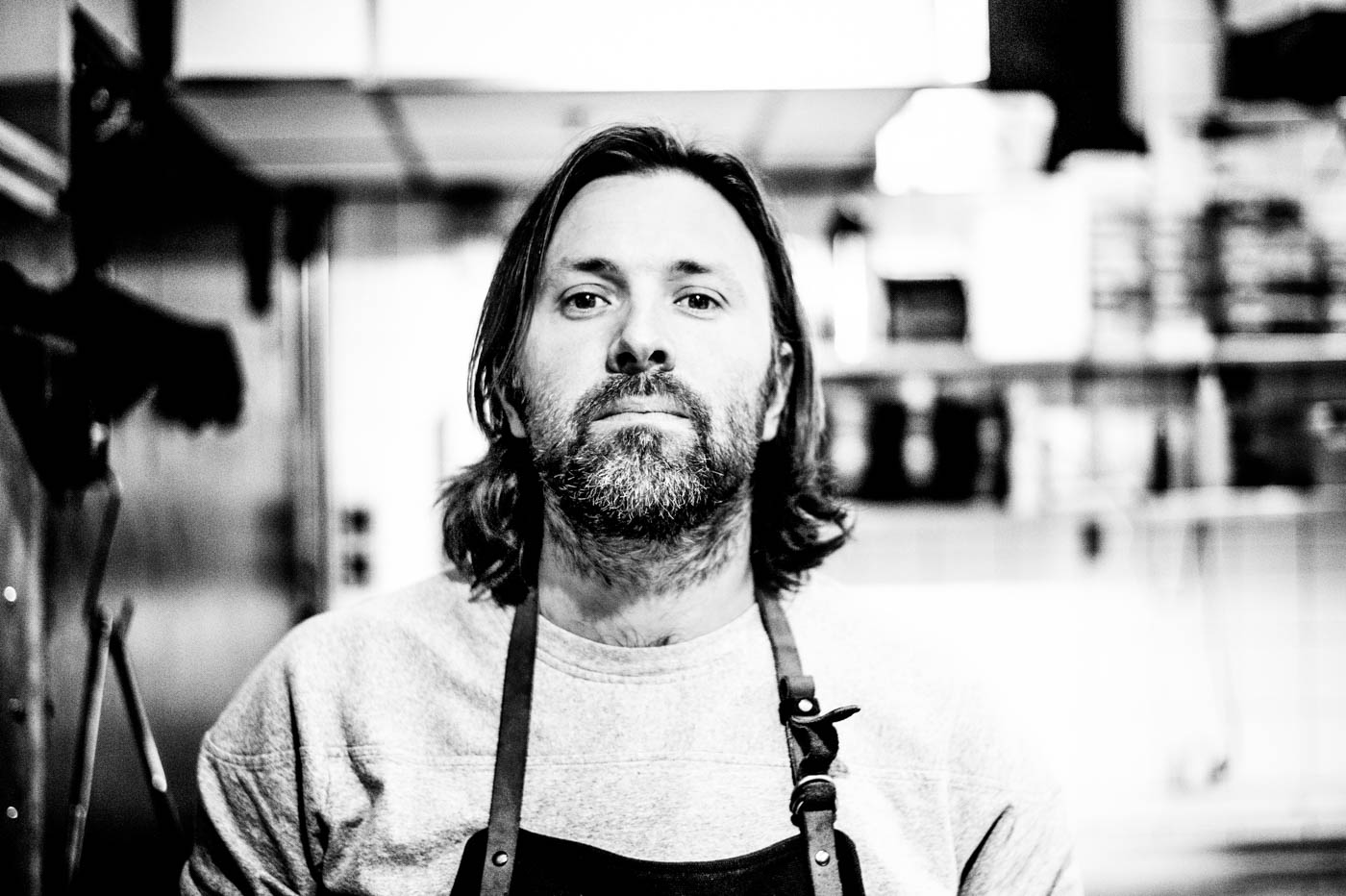
Ekstedt was born in northern Sweden, where in the wintertime the sun barely rises. In February, light plays on the horizon for just a few hours before the land sinks into darkness again. But in the months before, there isn’t even a hint of it. Northern Swedes are deeply connected with these cold, opaque months. It is central to the culture and to the personalities of its inhabitants. “I wasn’t affected by it as a kid. Growing up in the North, it’s constantly pitch black. But as I grew older and had children myself, things changed,” Ekstedt tells us. “Of course, the darkness affects the culture in many ways. Winters are long and people crave the sunlight.”
At the age of 21, Ekstedt opened his first restaurant, Niklas, in the port town of Helsingborg. Two years later it was named the fifth best restaurant by Sweden’s White guide. After managing two subsequent restaurants and hosting a flock of successful television shows, Ekstedt moved his growing team to Stockholm. There, he opened Ekstedt. It is in this copper-walled, amber-lit space, located in just off the leafy Humlegården Park, that we first meet the man himself. He is something of a star in Sweden. His TV shows, best-selling cookbooks and branded products have made him one of the hottest names in the Scandinavian food world. But as he greets us at the restaurant, quietly sipping a coffee at a wooden bench, it is clear that this is where he feels at home.
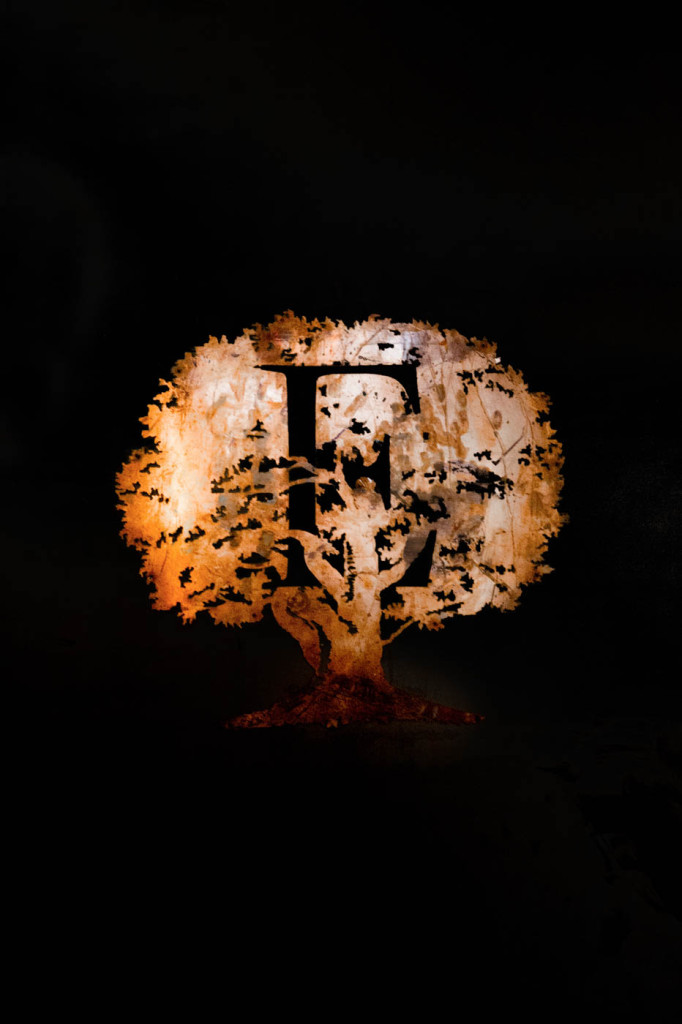
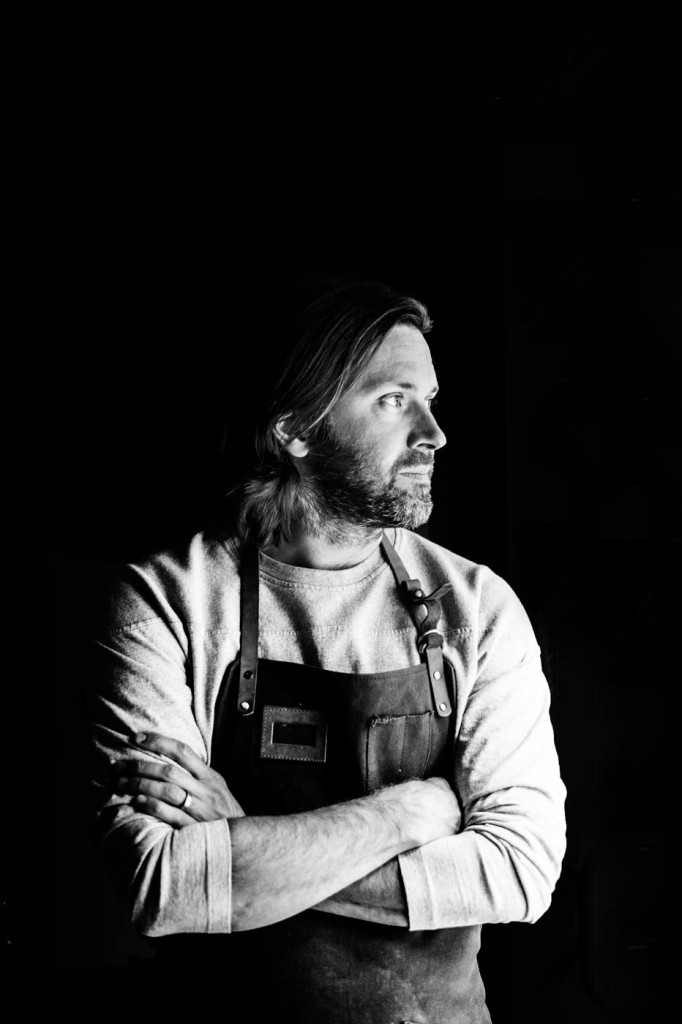
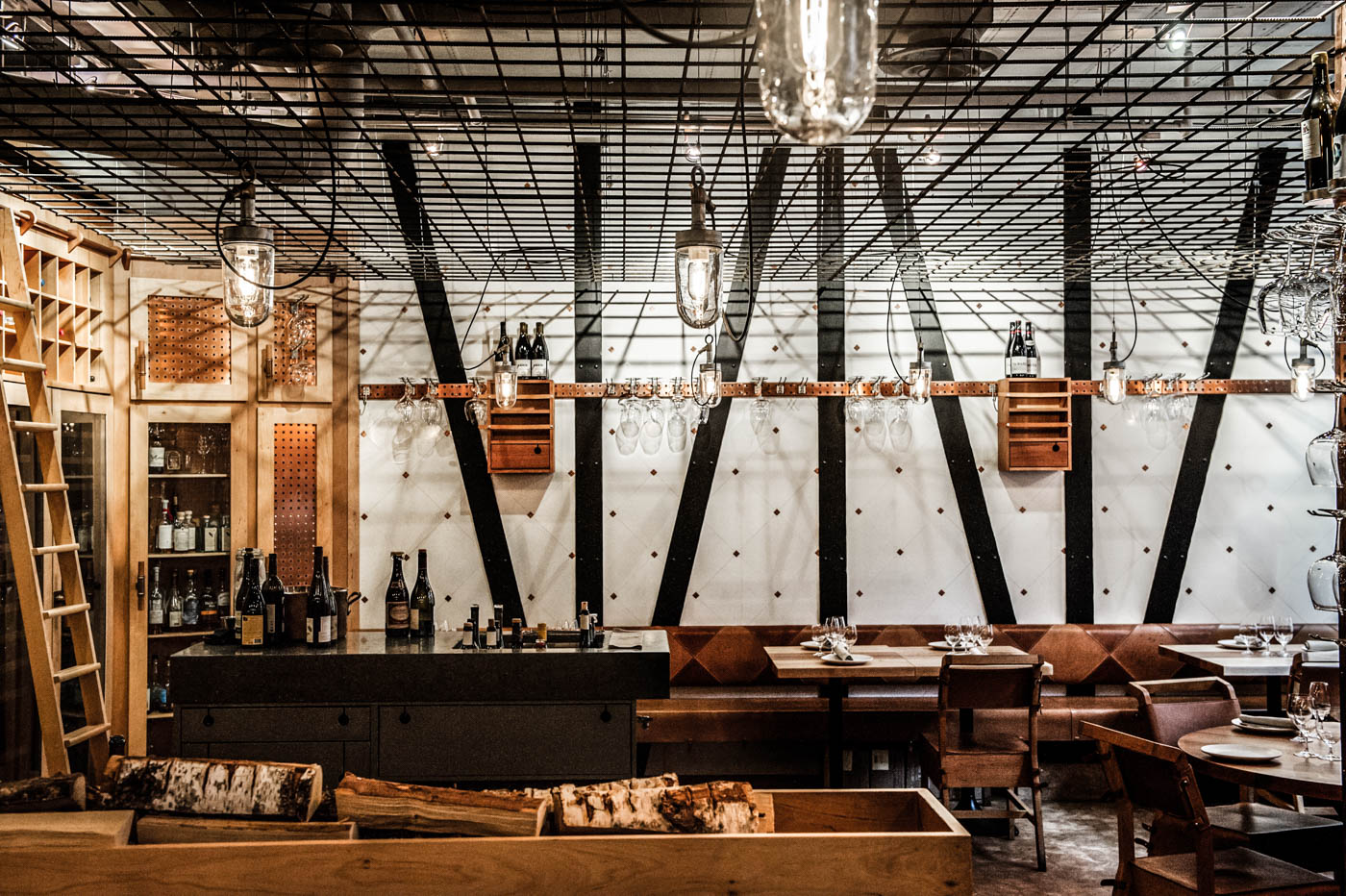
Ekstedt was born in Järpen, a small locality in Jämtland County. The village straddles the inland Indalsälv River, a remote scattering of red wooden buildings looking out over a carpet of forest. It is a village typical to rural Sweden. Embedded in rich natural surroundings, Järpen is where Mangus Nilsson grew up and opened the restaurant Fäviken, which was named one of the S. Pellegrino World’s 50 Best Restaurants in 2012. Looking at this still, secluded plain of land, one might not expect two of Scandinavia’s most celebrated chefs to have emerged from it.
Yet it was in this village that Ekstedt’s passion for cooking was carved out. “I had a wonderful childhood,” he tells us. “I grew up very close to nature. We were far from any big grocery stores, so we used what was around us as much as we could. Northern Swedish people live very in touch with the landscape. They are comfortable with the idea of hunting and foraging.” It was during this childhood, spent picking wild mushrooms in winter and stoking fresh fish outside with foraged herbs, that Ekstedt learned the cooking technique that would come to define him. It was in this time Ekstedt became acquainted with open-flame cooking.
At Ekstedt, there are no gas ovens, grills or deep fryers. Everything that comes out of the kitchen is prepared using live flames in a fire pit. The open flame is a cooking technique that harks back thousands of years, one that Ekstedt thinks has been lost in the high-end restaurant rat race. “There are too many gadgets in modern kitchens,” he says, sipping his coffee. “Cooking in this way was a maturing process for me. I’d been in kitchens for a long time and had grown tired of how focused everyone was on the technical aspects of cooking. It was so common in Scandinavian restaurants to focus on the product. We wanted to create a place where the emphasis was as much on the process as the end product.”
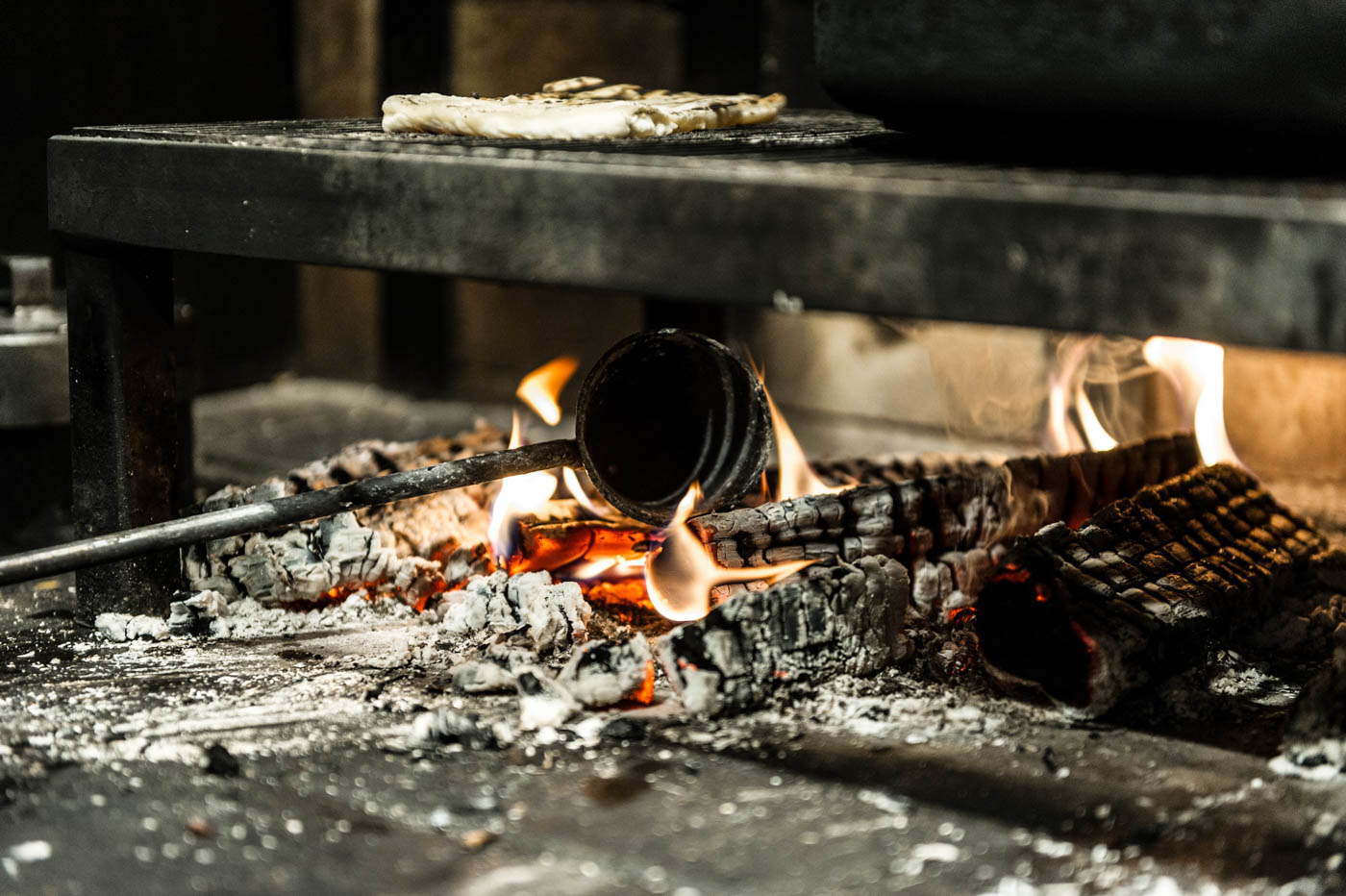
Ekstedt leads us through to the kitchen, where a stove from 1860 stands proudly in the corner. Its black shell is worn with time and heat. “My ideal kitchen would just have these,” Ekstedt says, placing a hand on the charred cooktop. Along with just a few other rudimentary cooking tools, the cast iron pot is instrumental in the blazing kitchens of Ekstedt. “Cast iron came in on the first menu. But we didn’t understand the greatness of it until later on,” he explains.
“When you work with fire, the cast iron retains the heat much better than anything else. It extracts flavor in the fire. There is a reason that the iron pan was used for 300 years on fire stoves. It makes utter sense. It’s like peas and carrots.” Ekstedt continues, “We knew people had used it for centuries, but we didn’t know why. When you work with stove and fire, you eventually figure out that cast iron is the best possible way to create flavor.”
The restaurant has been celebrated for its creative dishes, food that celebrates the seasons in that unmistakably Scandinavian way. When we visited in October, the menu seemed to welcome the winter darkness that was creeping into the skies––hay-baked Swedish beef with smoked garlic, smoke box turbot with truffle, blackened langoustine with smoked butter and cast iron bone marrow. “The funny thing is that the products other high-end restaurants use are very tender and small,” Ekstedt remarks. “But our heat is hotter than a modern kitchen, so we can use rougher, tougher products.”
“We constantly work with the seasons,” Ekstedt adds. “It just comes naturally because we work with Nordic produce. It’s not something we force. The food is there around us, so we use it.” Exposing these ingredients to blistering flames and complex smoke creates deep, rich flavors. These, according to Ekstedt, are flavors we have lost touch with through modern cooking techniques. “No one else is doing this, so some people just don’t understand the concept.” He explains, “If you look back through gastronomic history, electricity is just a fragment of it. It’s only been around for a second, and yet everyone is so surprised to see a restaurant using open flames like they used to be used.”
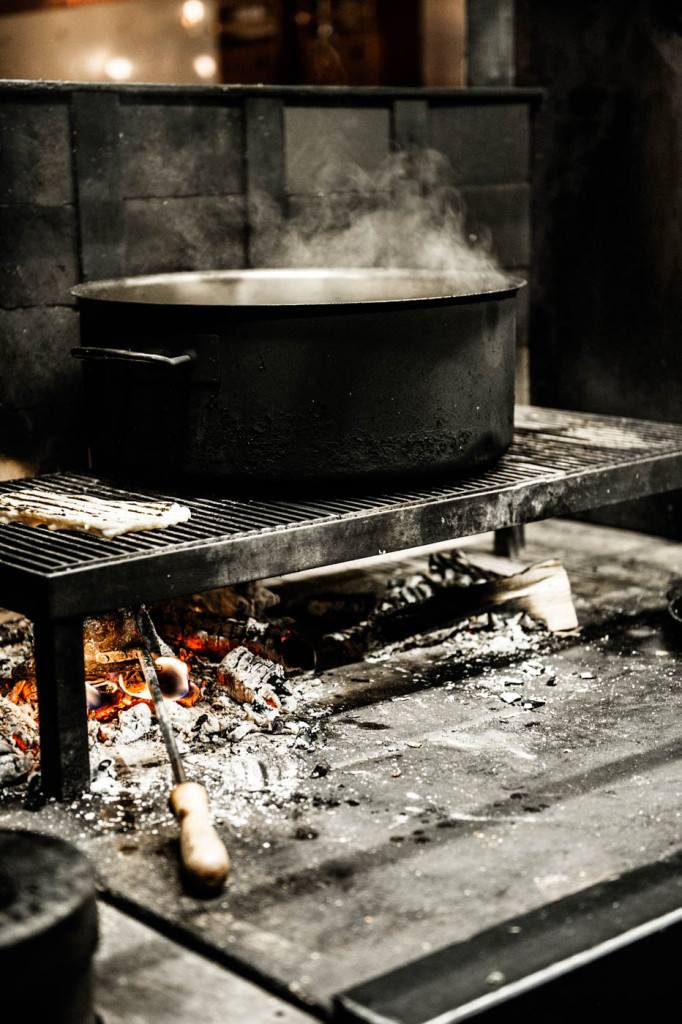
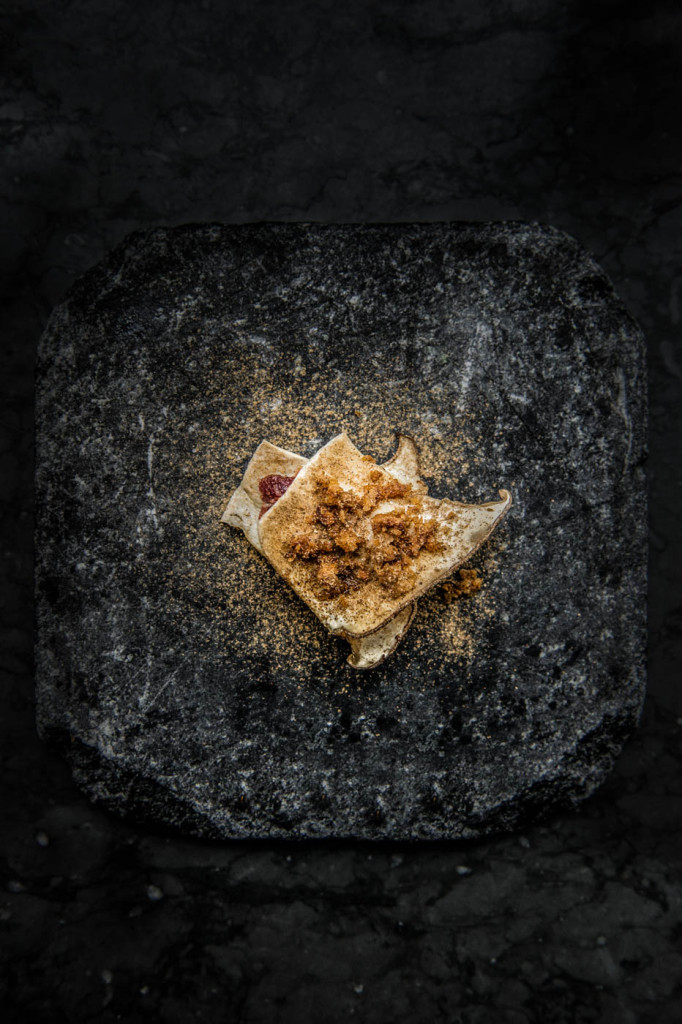
The renowned dishes at Ekstedt are often informed by guests. “We usually stumble upon recipes,” Ekstedt explains. “Sometimes it’s from someone telling us a story. We had a guest come into the kitchen and tell us how their grandmother used to cook fish on an open flame, and we came up with a recipe from that. Scandinavian people often grow up hunting and foraging. Everyone at least has a family member that lives outside of the city, so everyone has their own story.”
What were the challenges, I wonder, of bringing a cooking technique that belongs in the wilderness inside the folds of a luxury restaurant? “Bringing it into a restaurant kitchen was a challenge,” Ekstedt explains. “The idea was always to open the restaurant in the winter time, and we faced enormous hurdles trying to get it going in the first few months. It’s complicated in the sense that it is hard labor. It’s difficult to find new cooks to learn the techniques we use. As instinctive as this method of cooking is, people are so out of touch with it.”
He can do little to mask his grimace in response to my next question: how do you stay inspired when you are only using one method? “People often ask that,” he sighs. “And the answer is this: the possibilities are endless. This is where the love of cooking with fire comes from––the amount of things you can do with it. There was once a time when this was the only technique, so of course the recipes you can come up with using this are endless.” He leans forward, “For centuries people cooked with birch wood. It’s like comparing the acoustic guitar to the electric guitar. Acoustic is where it all began. Wood, hands, nature.”
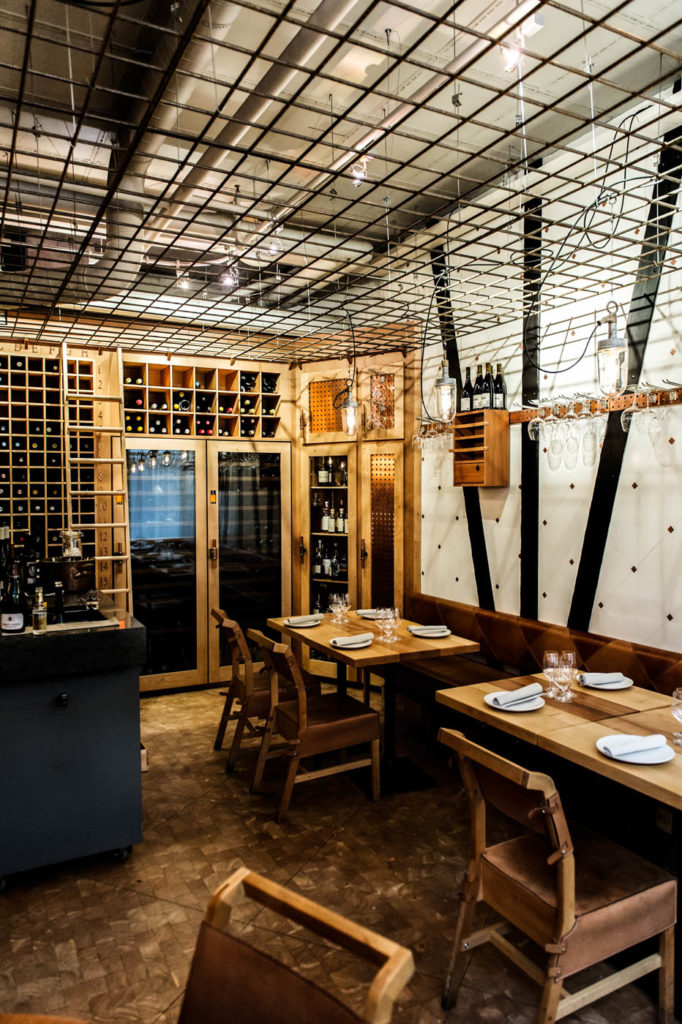
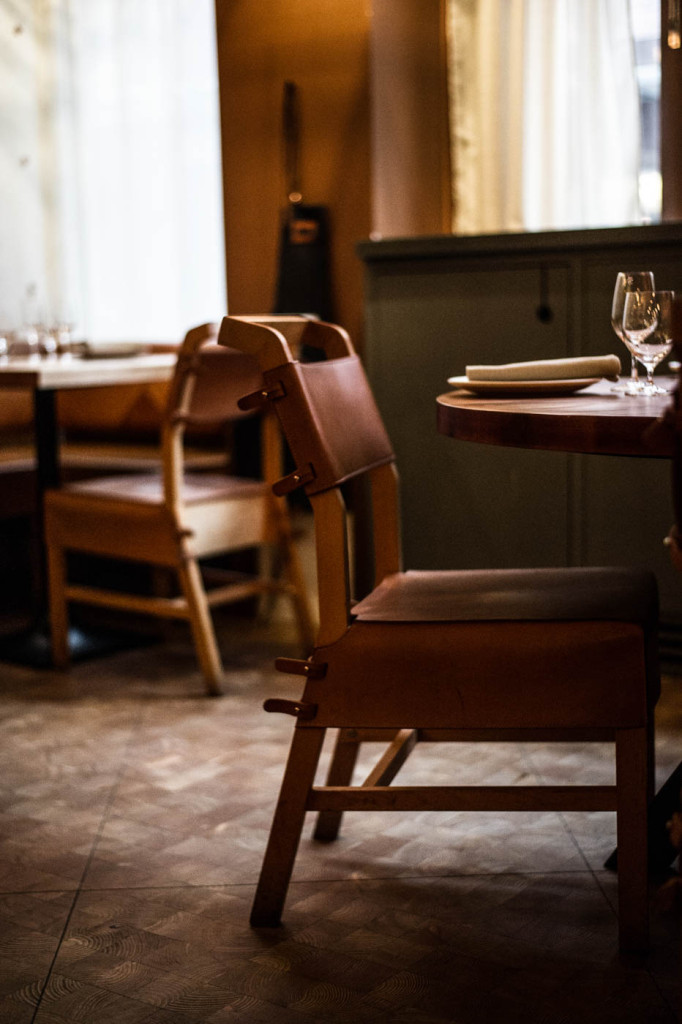
It is easy to imagine Ekstedt in the winter. The room burns with orange light. The warmth not only comes from the carefully designed room, but from the atmosphere in the kitchen. We visited in the afternoon, when the restaurant hosts its Saturday Project. The doors open for employees to come experiment in the kitchen and work on their own projects on paid time. Staff bustle around the kitchen, their heads down as they chop, tear and stir their own creations. As Ekstedt and I talk, an employee brings over a small stone slab mounted with shreds of beef and crisp bread. Ekstedt takes a bite, rejoicing in the delicate little snack. He launches into applause. The employee laughs, and turns back to the flames.
Stockholm is a city driven by efficiency, technology and minimalism. Yet stumble upon a bar that plays Billie Holiday through a scratchy gramophone, browse a bookshop with ladders leaning against the shelves, or eat a plate of seared sweetbreads prepared using the primitive techniques of times gone by at Ekstedt, and the soul of the past comes to life once more.
“I think people are getting weary of technology. We’re going back to analog a little. Coloring books for grown ups are the most sold books in Sweden right now. People want to go back and relax,” Ekstedt muses, turning a pair of fireproof gloves over in his hands. “High tech is not going to go away. But it will be more concealed. Particularly in things that you hear, see or taste. It’s so vital that we keep using our senses in the way we always have. It’s about keeping it tactile and human. Bringing these old techniques back from the dead reminds us of who we are, of where we came from.”

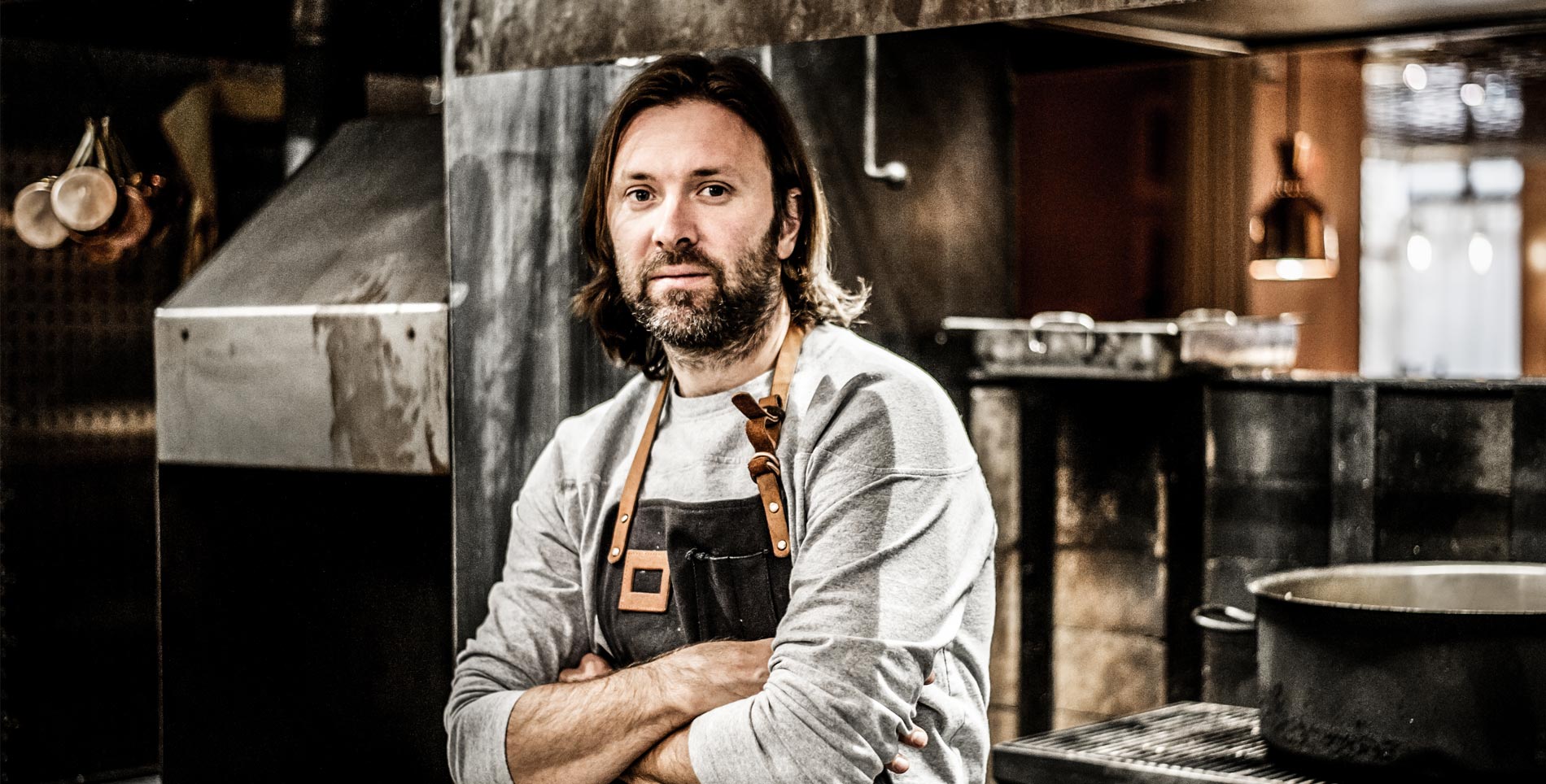

Our comments section is for members only.
Join today to gain exclusive access.